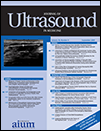Maintenance of Hemodialysis Arteriovenous Fistulas by an Interventional Strategy
Clinical and Duplex Ultrasonographic Surveillance Followed by Transluminal Angioplasty
Abstract
Objective. A native arteriovenous fistula (NAF) is a widely used access location for hemodialysis (HD). Monitoring of the NAF followed by percutaneous transluminal angioplasty (PTA) as needed may reduce the incidence of NAF failure according to nonrandomized studies. The aim of this randomized study was to determine whether an interventional strategy consisting of clinical and duplex ultrasonographic (DUS) surveillance of NAFs followed by PTA reduces the rate of the need of central venous dialysis catheters (CVCs) and NAF thrombosis in patients undergoing HD. Methods. A total of 108 patients with 111 functioning NAFs in an HD program were randomized to control and interventional strategy groups. The control group received standard care: clinical and hemodynamic NAF assessment followed by vascular surgeon consultation in cases of dysfunction. In the interventional group, the patients underwent clinical monitoring and systematic DUS surveillance every 3 months. Cases with access dysfunction underwent angiography followed by PTA for stenosis of 50% or greater. Primary outcomes were the need of temporary CVCs and fistula thrombosis. Results. Fifty-eight NAFs were randomized to the control group, and 53 were randomized to the interventional group. Groups had similar baseline characteristics. The interventional strategy showed a significant reduction in the CVC need (25.9% versus 7.5% for control and interventional groups, respectively; P = .021). No significant difference was observed for thrombosis rates (24.1% versus 17.0%; P = .487). The composite end point of NAF thrombosis or CVC need was reduced by the interventional strategy (44.8% versus 20.8%; P = .033). Conclusions. This randomized study indicates the benefit of a surveillance program for maintenance of NAFs based on clinical and DUS surveillance followed by PTA of major stenosis.




